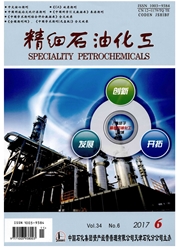

 中文摘要:
中文摘要:
单铁氢化酶的活性中心能在自然环境条件下催化异裂氢分子并且选择性还原特定底物。自从20世纪90年代,其第一次被分离出来后,科学家一直在努力模拟单铁氢化酶活性中心的结构及功能,期望通过仿生手段,实现类似自然界温和利用氢气的功能,来解决当今氢能在使用中贵金属催化剂等问题。仿生单铁氢化酶活性中心模型化合物被不断合成研究,促进了对酶活性中心几何结构和电子特性的认知。红外光谱特征、催化禁阻特性、质子化特性、密度泛函分析(DFT)以及催化机理探索等为未来研究提供了理论基础。本篇综述主要总结了近些年单铁氢化酶的分离表征、晶体结构、活性中心的仿生模拟、催化机理探索方面研究进展。
 英文摘要:
英文摘要:
Mono iron hydrogenase( Hmd) is able to achieve H2 heterolysis and selective reduction of unique substrate in the mild condition. Hmd had been separated since 1990 s. Scientists tried to mimic the active site of Hmd in order to find potential solution to the sustainable resources for the energy usage of hydrogen. Some models had been synthesized and reported which helped to understand the geometric and electronic structure of active site. FT-IR spectroscopy,inhibited catalytic property,protonation phenomena,DFT( density functional theory) computations and proposed mechanism based on the models had been explored. In this review,the research progress of Hmd in the aspects of isolation,crystallographic characterization of active site,synthetic models,catalytic activation and mechanism were summarized.
 同期刊论文项目
同期刊论文项目
 同项目期刊论文
同项目期刊论文
 Photocatalytic hydroxylation of phenol to catechol and hydroquinone by using organic pigment as sele
Photocatalytic hydroxylation of phenol to catechol and hydroquinone by using organic pigment as sele Preparation and enhanced visible light catalytic activity of TiO2 sensitized with Benzimidazolone Ye
Preparation and enhanced visible light catalytic activity of TiO2 sensitized with Benzimidazolone Ye 期刊信息
期刊信息
